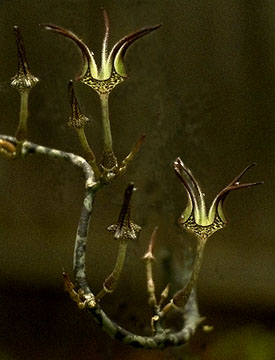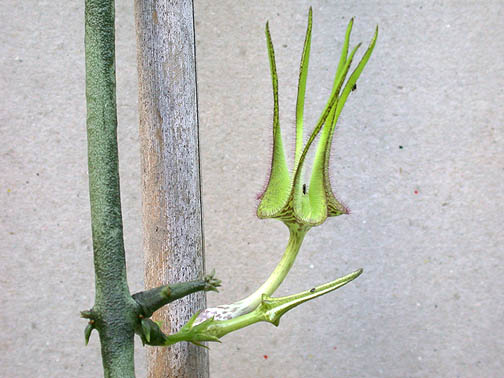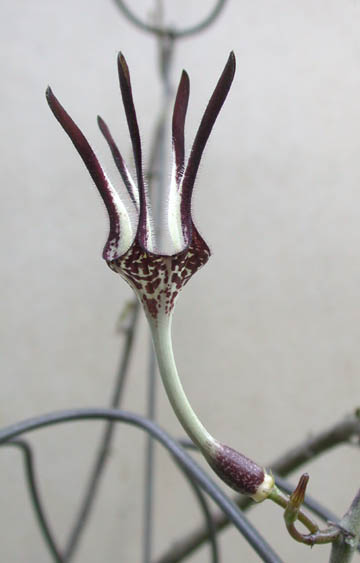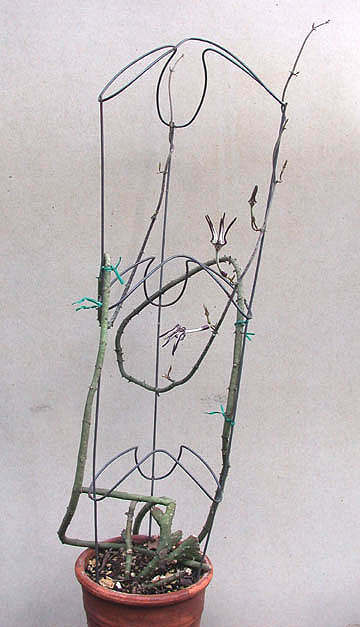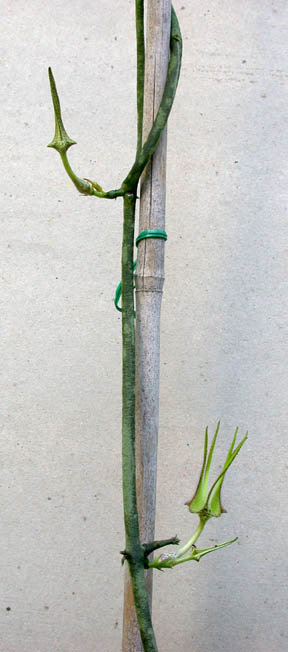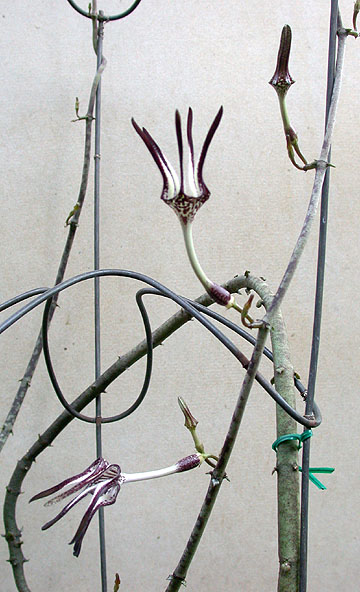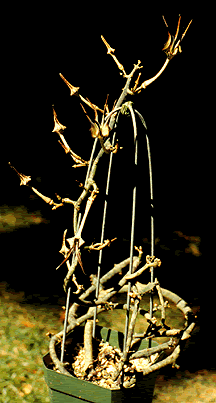
This plant is native to the Cape Province (South Africa) and has been known since1827.
This is one of the first ceropegias that I collected. It's probably one of the easiest to grow. It has fleshy fibrous roots and it will propagate easily when the temperatures are warm. It took a while before I was able to bring it into bloom. The trick seems to be to take new cuttings each year and grow them on in new soil. The old stems will put out new growth that breaks off easily, sometimes the new shoots form roots before I break them off. It likes to bloom under high shade where it gets some morning and afternoon sun. It has never set seeds for me even though I see a lot of small flies on the open corolla lobes while the flowers are open. As you see in this picture, it can be a prolific bloomer.
